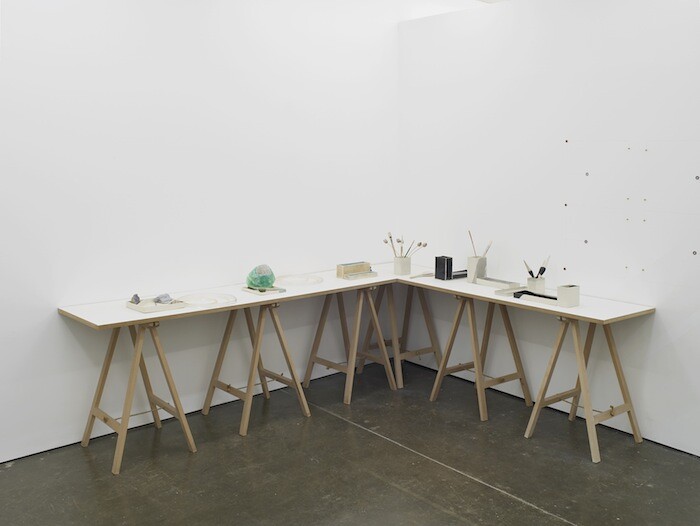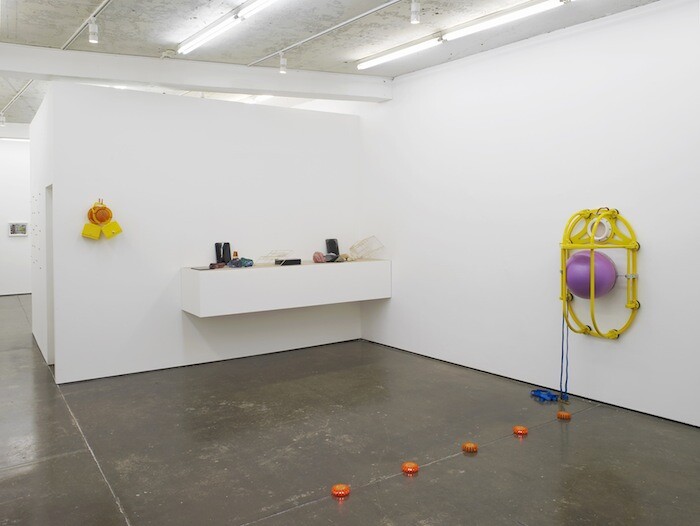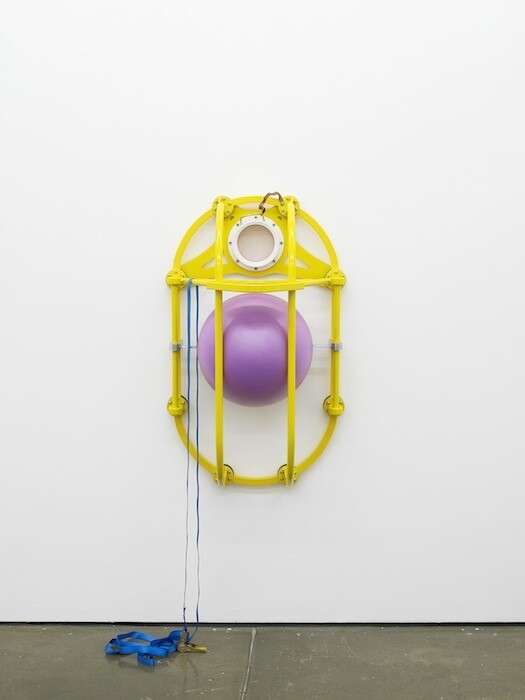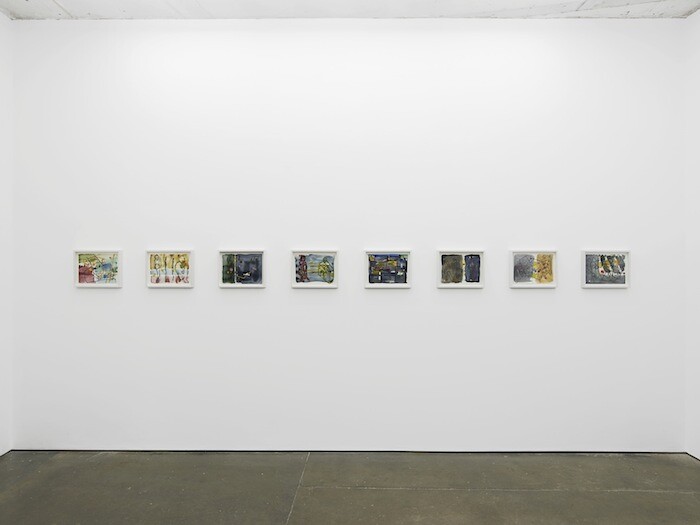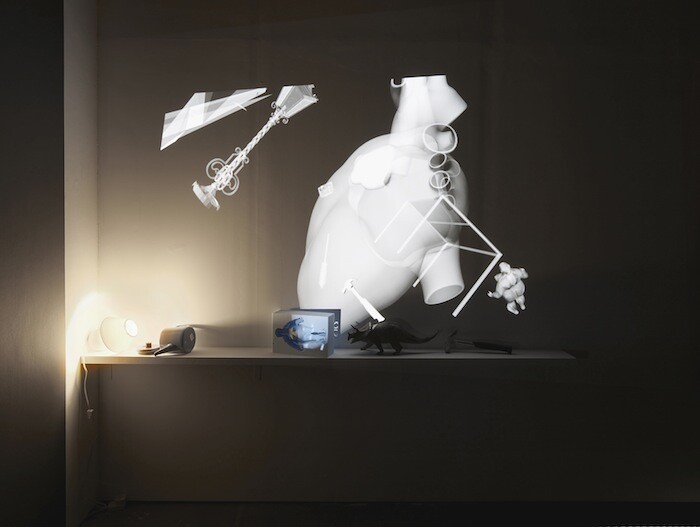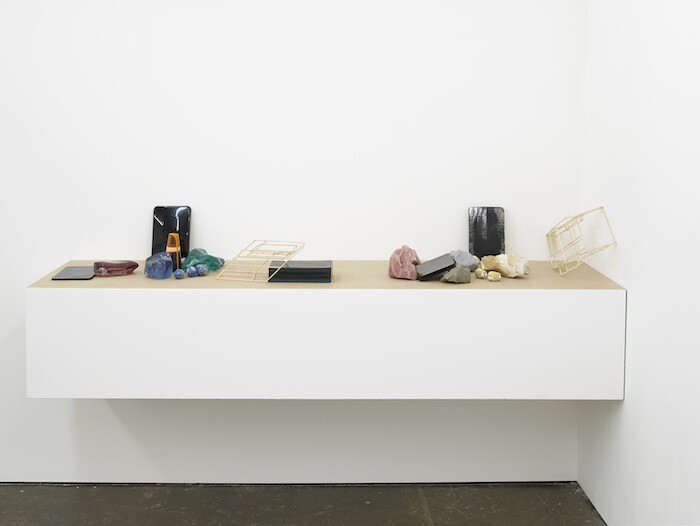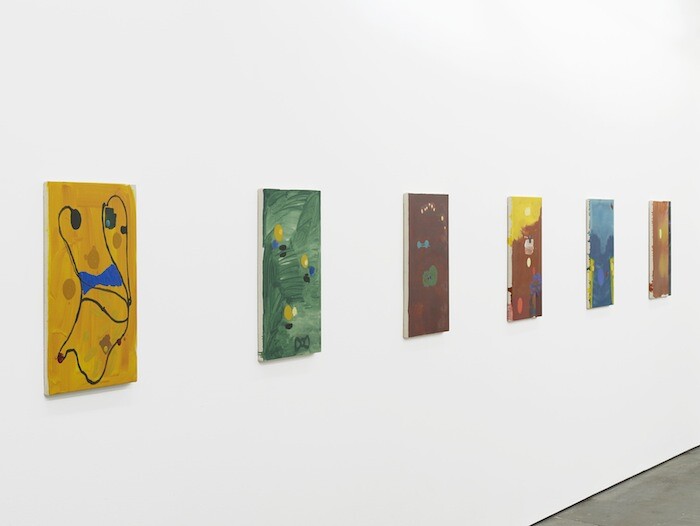Christina Mackie’s installations have an instinctive and provisional feel about them. They present the viewer with arrays of disparate objects, arranged on trestle tables, walls, and shelves, assembled according to a spontaneous logic of correspondence and juxtaposition. Mackie refers to this aspect of her work as “trestle art.”1 Wolfgang Tillmans’ tables and vitrines (such as truth study centre, Tate, 2017), Camille Henrot’s The Pale Fox (2014), and Portia Munson’s Pink Project: Table (1994) are a few notable examples of the genre. Recalling the Surrealist tradition of assemblage and the more recent trend of “archive art,” in which artists collect and compile existing imagery and information, “trestle art” positions the artist as curator or analyst. Filtration and distillation take precedence over production. Objects, selected according to fixed and often idiosyncratic criteria, are brought into conversation with one another.
As Hal Foster has observed, “archival artists seek to make historical information, often lost or displaced, physically present.”2 One obvious difference between Mackie’s works and those of other “trestle” and “archive” artists is that she makes almost all of the objects herself. A notable example in “Drift Rust,” Mackie’s solo exhibition at London’s Herald Street (the show is described as an installation in the gallery text), is Brushes Pots (all works 2017). The stoneware vessels in this series are colored with gestural splashes of gray and blue glaze. The trays and vase-like forms, in various sizes and shapes, are filled with calligraphy and paint brushes, carved wooden tulips, translucent lumps of resin, and other materials. Presented on trestle tables in a corner of the gallery’s back room, the pots speak of an artisanal attention to tactility and craft, both in terms of their making (by hand) and their implied function (as utensils in the creation of potential new works of art). The trestle table here invokes the studio in which it was made.
Mackie’s installations can be jarringly eclectic, however, and “Drift Rust” is no exception. At Herald Street, the artist incorporates industrial readymades to counterbalance the stoneware pots, referencing the assembly line as well as the artist’s studio. In the gallery’s front room, mass-produced LED hazard lights are placed in a row on the floor. Resembling hockey pucks clad in orange rubber, these blinking discs lead the eye towards Yellow Machine, a cage-like sculpture bolted to the wall. Recalling the apparently redundant filtration machines of The Filters, Mackie’s 2015 installation in the Duveen Gallery in London’s Tate Britain, Yellow Machine appears to have been built for one obscure purpose: to contain or protect a purple exercise ball. Its curved tubes are painted Signal Yellow 1003, a lurid color common to industrial manufacture. Set against Night Pictures 1-10—a series of abstract watercolors, displayed on the gallery’s far wall, which employ blue, black, ocher, maroon, and other crepuscular shades—the visual contrast is extreme. Mackie deliberately cultivates a heightened awareness of the incongruity of her chosen materials.
Juxtapositions are employed, with varying effect, throughout “Drift Rust.” The most successful are intricate: they exist in the narrow spaces between things. At this intimate scale, the artist’s touch is nuanced and precise. A pair of blotchy watercolors, linked by a hinged frame, is placed near rough-hewn chunks of spearmint-green resin and glass (Table Set Green (Spring)). Rectangular blocks of black resin, resembling iPads minus the screens, are set beside brittle geometric cages assembled from wooden sticks, alongside more chunks of colored glass (Table Set Dark 1). These objects correspond with and contrast one another, producing dioramas of sculptural tension and harmony. Some surfaces shine, revealing rippled hues in their translucent depths. Others flatly absorb the light. The eye drifts over the work, meandering from object to object. Mackie has described her installations as “emotional landscapes”: spatial metaphors for inner states.3 The end result can be impressionistic to the point of vagueness.
This reflects the studied indeterminacy of Mackie’s work. Her aim could be described, following the title of André Breton’s 1935 lecture, as an attempt to “bewilder sensation.” Remarking on an earlier exhibition, Mackie said she “wanted to make work without ego, just throw it together in no more than two seconds.”4 The risk of such an improvisational and open-ended strategy is that it relies upon the viewer’s willingness to yield to bewilderment: to indulge, as the artist does, in the pleasure of juxtaposition, and actively to join the dots. “Drift Rust” is undermined by the muddling abundance of media employed. The artist seems anxious to express the gamut of her capabilities and interests, to hit every note in the scale. Oil painting, watercolor, wall drawing, 3D projection, and so on, clash in the confines of the gallery. Mackie here seems less like a curator, archivist, or analyst of her materials than an advocate for their diversity. One reading of “drift” is the gist of an argument. At Herald Street, I didn’t catch it.
Jamie Stevens, “Interview with Christina Mackie,” Chisenhale Gallery, January 2014: http://chisenhale.org.uk/images/exhibitions/Christina_Mackie_Interview.pdf.
Hal Foster, “An Archival Impulse,” October vol. 110 (Fall 2004): 3–22.
Charlotte Higgins, “Visions of ‘emotional landscape’ seduce Beck’s judges,” The Guardian, April 27, 2005: https://www.theguardian.com/culture/2005/apr/27/awardsandprizes.
Stevens, ibid.

